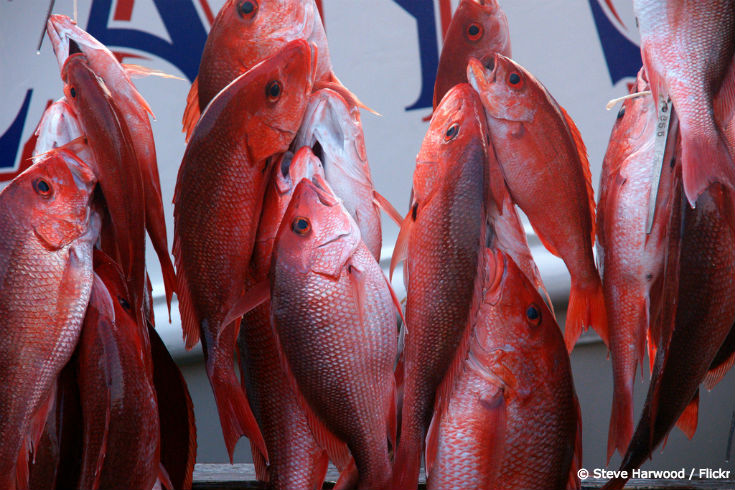A Record Short Season
Published by Ocean Conservancy

A fisherman conservationist’s perspective on why the federal red snapper season is just three days long.
As a Floridian recreational fisherman, I share the disappointment of others in my community over such a spectacularly short federal season—just three days in 2017—for the iconic red snapper in the Gulf of Mexico.
As a conservationist, I absolutely get why National Marine Fisheries Service was forced to make this decision. Red snapper is managed as a single fishery in the Gulf of Mexico, which makes sense because red snapper don’t respect our political boundaries and swim freely in the Gulf. So if state water seasons are too long and result in catches far exceeding the science-based quota necessary to rebuild the fishery, the federal season has to reset the balance.
Consider this: Texas has had a 365 day state water season for decades, while Florida has pushed their season out to more than 70 days over the past several years. Mississippi, Louisiana and Alabama are all also inconsistent with federal water seasons. The situation has been further complicated by Louisiana, Mississippi and Alabama each extending their state water boundaries out from three to nine nautical miles, creating a vast new swath of fishing grounds subject to the more liberal state water seasons that further erode fishing opportunities in federal waters.
While this is of some benefit to some anglers in the northern Gulf, who may have the opportunity to catch red snapper in state waters during the extended state seasons, there are many other recreational anglers who get the short end of the stick. For those of us who live in, say the Tampa Bay area, where we have to travel 30 miles offshore to find red snapper, state seasons are useless no matter how long they are because we simply can’t catch red snapper in state waters—we have to fish for red snapper in federal seasons, and that means we only get three days to try to land our limit this year.
That’s unfair. And the fact is, the Gulf states are a key contributor to the short federal season and resulting imbalance in fishing opportunities for anglers around the Gulf. Sadly, some decision-makers on Capitol Hill want to reward this behavior by doing away with key conservation requirements and handing even more management oversight to the states. These kind of proposals turn a blind eye to what is actually working to recover the red snapper fishery: the Magnuson-Stevens Fishery Conservation and Management Act’s requirements for a science-based rebuilding program and accountability for fishing fleet performance and the development of an effective management program for the commercial fishery. These management triumphs have allowed red snapper in the Gulf to rapidly recover from decades of overfishing. We’ve had the highest catch levels on record over the past three seasons. Recreational catch has rebounded from only 2.45 million pounds in 2009 to 7.19 million pounds in 2016.
Here at Ocean Conservancy, we are doing our best to urge Congress to avoid the perils of returning to old, failed systems that will turn back the clock on the hard-earned successes in the red snapper fishery. Instead the development of stakeholder driven solutions for the effective management of the recreational red snapper fishery is what is needed. I am fortunate that it is my personal and professional mission to help rebuild and sustain America’s fisheries. I love fishing and I hope that as a community we can base our management decisions on science, take the long view and do the right thing so we can continue to fish for red snapper.
At the end of the day, we all share the responsibility for the rebuilding the red snapper fishery. The traditions of generations of fishermen, small businesses in hundreds of coastal economies, and the long term rebuilding of sustainable American fisheries are at stake.
Read the full article at: http://blog.oceanconservancy.org/2017/05/02/a-record-short-season/



